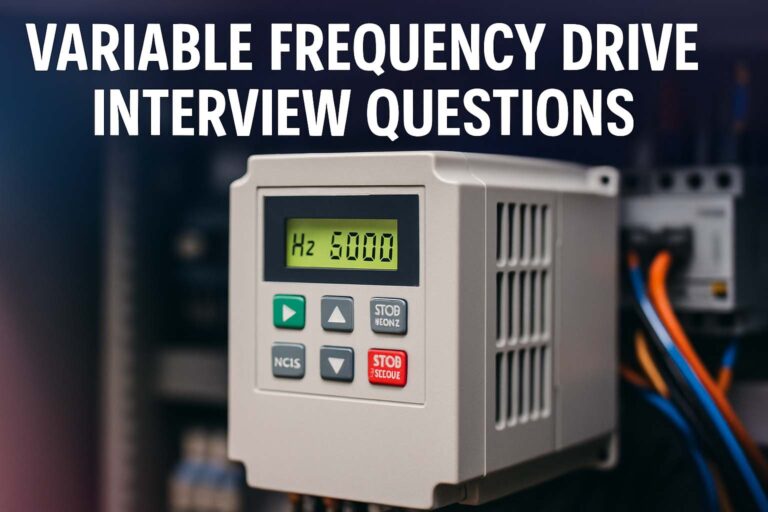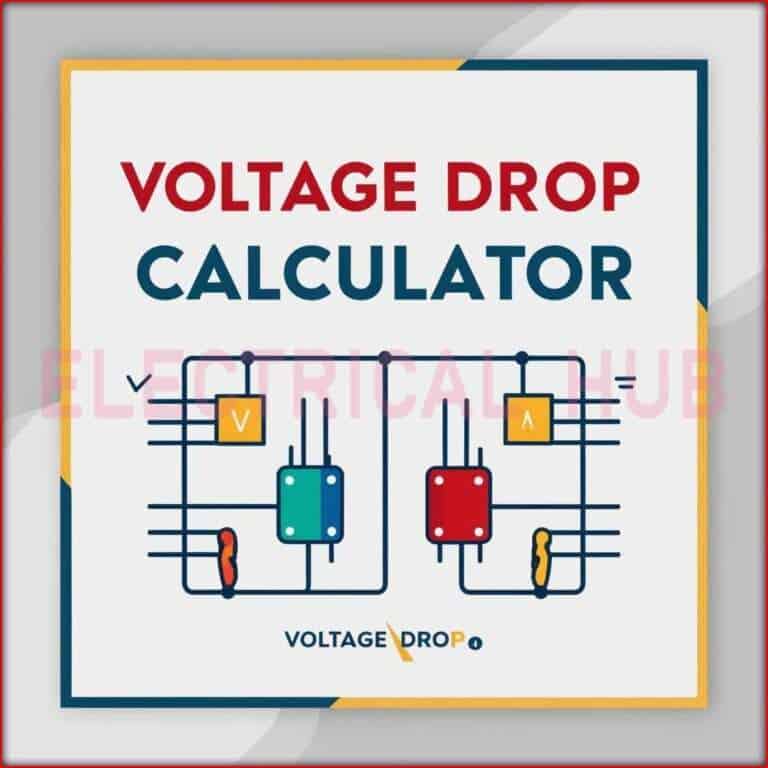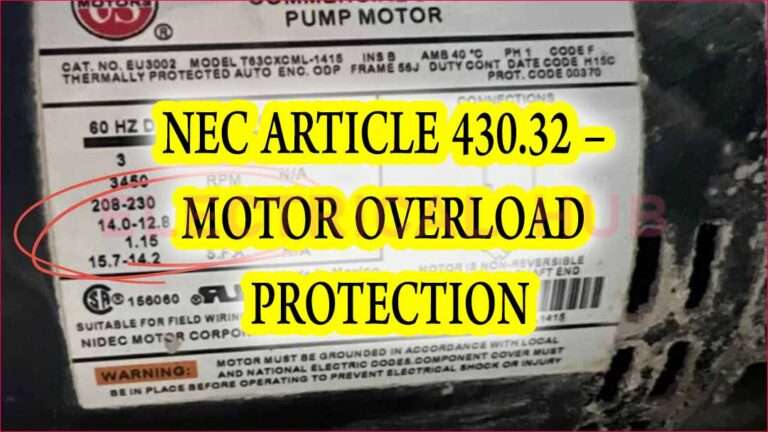10 Proven Steps to Select an Overcurrent Relay for Reliable Power Protection
Selecting an overcurrent relay is a critical task in electrical power systems. Overcurrent relays protect equipment and ensure system stability by detecting excessive currents and isolating faulty sections. Choosing the right relay involves understanding system parameters, load conditions, and coordination with other protective devices. This article explains how to select an overcurrent relay in a simple, technical, and practical manner.

Table of Contents
Understanding Overcurrent Relays
An overcurrent relay (OCR) is a protective device that operates when the current exceeds a predetermined value. It safeguards transformers, generators, motors, and distribution lines. There are two main types of overcurrent relays:
- Instantaneous Overcurrent Relay: Operates immediately without intentional delay. Ideal for severe faults near the relay location.
- Time-Overcurrent Relay: Operates after a time delay proportional to the magnitude of overcurrent. Used for coordination and grading with other protective devices.
The relay can be electromagnetic, static, or digital. Modern systems prefer digital relays due to better accuracy, flexibility, and multifunction capabilities. Read in detail about types of transformer protection relays
Key Parameters for Selecting an Overcurrent Relay
Before selecting an OCR, consider these parameters carefully:
- System Voltage and Current Rating
Ensure the relay can handle the system voltage and primary current. For example, if a feeder carries 500 A at 11 kV, select a relay rated for at least 500 A with proper CT ratios. - Short Circuit Capacity
The relay must withstand the prospective fault current. Check the maximum fault current at the relay location. Digital relays often handle higher fault currents due to advanced electronics. - Relay Characteristics
- Pickup Current (Ip): The minimum current at which the relay starts operating. Usually set as a percentage of full load current.

- Time-Current Characteristics: Determines how quickly the relay responds at different current levels. Choose between standard curves like IEC or IEEE.
where (I_L) is the line current and (k) is the multiplier (typically 1.2–1.5). Uncover insights on high impedance protection - Operating Time and Coordination
Overcurrent relays must coordinate with upstream and downstream devices to isolate only the faulty section. Time grading ensures selectivity. The general formula for coordination margin is:

- where Delta-t is the coordination margin (usually 0.3–0.5 seconds).
- Short Circuit Ratio and CT Sizing
Accurate current measurement requires correct CT selection. The CT ratio should match the primary current and relay requirements. The formula for CT ratio:

Learn in detail on vfd overload current setting
Step-by-Step Guide on How to Select an Overcurrent Relay
Step 1: Analyze System Data
Collect system parameters including voltage levels, line currents, load profiles, transformer ratings, and fault current calculations. Accurate data ensures proper relay selection and prevents nuisance tripping. Uncover insights on high impedance protection
Step 2: Determine Relay Type
Decide whether an instantaneous or time-overcurrent relay suits your application.
- Instantaneous relays are used for high fault currents near generators or transformers.
- Time-overcurrent relays are suitable for distribution networks requiring coordination.
Step 3: Set Pickup Current
Calculate pickup current using the formula:

Choose ( k ) based on system margin. For feeders, ( k ) is generally 1.2–1.5. For motors, a higher margin may be used to prevent tripping during starting currents.
Dive deeper into differential protection of alternator
Step 4: Choose Time-Current Characteristics
Select the appropriate time-current curve. Standard curves include:
| Curve Type | Application | Time Behavior |
|---|---|---|
| IEC Standard Inverse | General protection | Moderate inverse delay |
| Very Inverse | Transformers, motors | Faster at higher currents |
| Extremely Inverse | Feeders with high short-circuit | Quick for severe faults |
| Definite Time | Simple protection | Fixed operating time |
Curve selection depends on coordination and fault levels. Very inverse or extremely inverse curves are ideal for high fault currents near transformers.
Step 5: Determine Time Setting
The relay time setting ensures selectivity. Use coordination charts and calculations to avoid overlapping with upstream devices. Example formula for time multiplier:

Step 6: Select CT and VT Ratings
Correct CT sizing is crucial. Choose a CT with a rating equal to or higher than the relay pickup current multiplied by the CT ratio. Voltage transformers (VTs) may also be required for relays operating on voltage-derived signals.
Step 7: Verify Short-Circuit Withstand
Check relay withstand capacity for maximum prospective fault currents. Ensure the relay does not saturate or fail during high fault conditions. Explore details on IEC Standard for Differential Protection
Step 8: Consider Environmental Factors
Evaluate temperature, humidity, and installation conditions. Industrial relays must tolerate harsh conditions, while digital relays may need auxiliary power and stable environmental conditions.
Step 9: Implement Protection Coordination
Verify relay coordination with upstream breakers, fuses, and other relays. The goal is minimal system disruption and safe isolation of faulty sections.
Step 10: Test and Commission
After installation, test the relay using secondary injection or simulation techniques. Verify pickup current, operating time, and coordination with other devices.
Practical Example
Suppose a 400 A feeder with a maximum fault current of 10 kA requires overcurrent protection. Steps to select a relay:
- Relay Type: Time-overcurrent relay.
- Pickup Current: ( I_p = 1.2 x 400 = 480 A )
- CT Ratio: For a relay rated 5 A, CT ratio = 400/5= 80/1
- Time-Current Curve: Very inverse for feeder protection.
- Time Setting: Use coordination chart to set TMS = 0.3 for selectivity.
This ensures the relay operates only for faults on this feeder while coordinating with upstream breakers. Know more about alternator protection scheme
Modern Digital Relays
Digital or microprocessor-based relays simplify selection. Features include:
- Multiple characteristic curves in one relay.
- Programmable pickup and time settings.
- Communication for remote monitoring.
- Self-diagnosis and event recording.
Digital relays reduce wiring and allow easier integration with SCADA systems. Get complete information about protection of alternator
Conclusion
Knowing how to select an overcurrent relay ensures reliable and safe power system operation. Follow these steps: analyze system parameters, choose relay type, calculate pickup current, select time-current characteristics, verify CT ratings, and ensure coordination. Modern digital relays offer flexibility and precision but require careful configuration. Proper selection reduces downtime, protects equipment, and enhances system stability.
Learn more about types of generator protection relays
Follow Us on Social:
Subscribe our Newsletter on Electrical Insights to get the latest updates in Electrical Engineering.
#OvercurrentRelay, #RelaySelection, #ElectricalProtection, #PowerSystemProtection, #ElectricalEngineering, #RelayGuide, #OvercurrentProtection, #StepByStepGuide, #IndustrialAutomation, #ElectricalSafety





